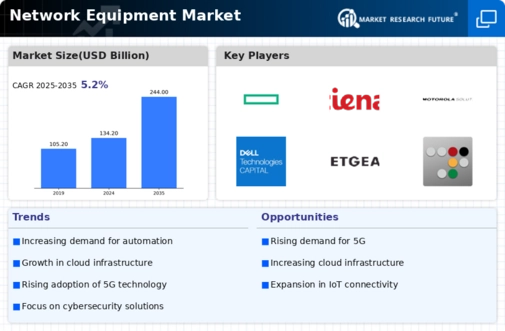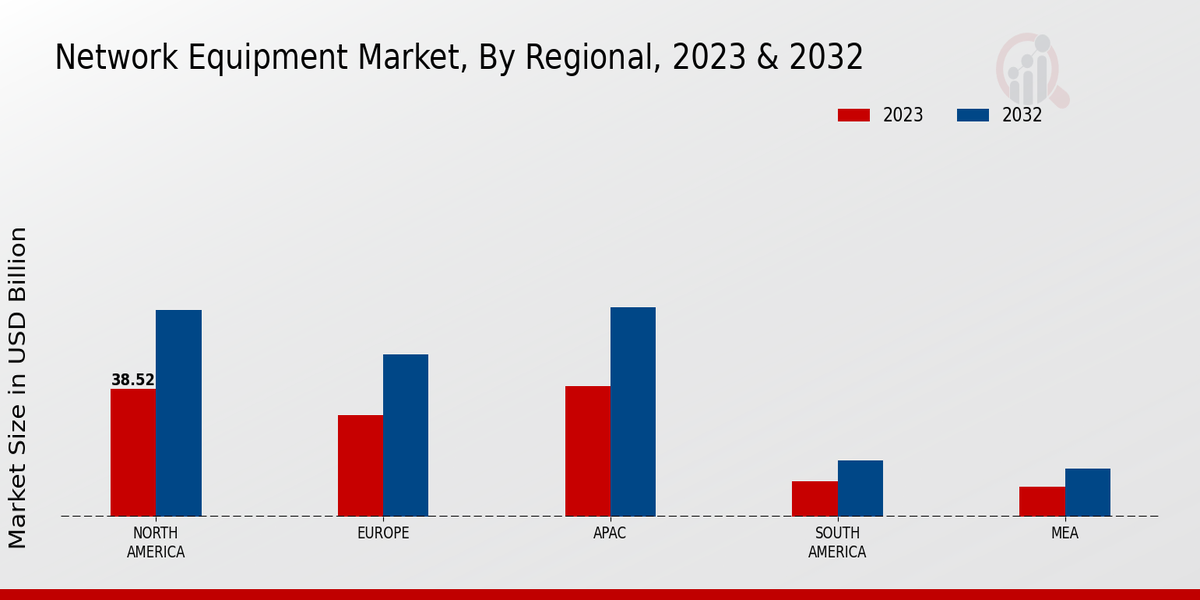Expansion of 5G Networks
The Global Network Equipment Market Industry is poised for transformation with the ongoing expansion of 5G networks. This next-generation technology promises to deliver unprecedented speed and connectivity, driving demand for advanced network equipment. As countries invest in 5G infrastructure, telecommunications providers are upgrading their equipment to support this transition. The anticipated growth in the market, with a projected CAGR of 5.59% from 2025 to 2035, underscores the importance of 5G in shaping future networking solutions. The deployment of 5G networks is likely to create new opportunities for innovation and competition within the industry.
Emergence of Smart Cities
The Global Network Equipment Market Industry is increasingly influenced by the emergence of smart cities, which leverage advanced technology to enhance urban living. As cities adopt smart infrastructure, the demand for reliable network equipment escalates, facilitating communication between devices and systems. This trend is expected to drive significant investments in networking solutions, as municipalities seek to improve efficiency and sustainability. The integration of smart technologies in urban planning necessitates robust network infrastructure, indicating a potential growth trajectory for the industry. As more cities transition towards smart solutions, the demand for innovative network equipment is likely to rise.
Market Trends and Projections
Increased Cybersecurity Concerns
The Global Network Equipment Market Industry faces heightened scrutiny due to rising cybersecurity threats. Organizations are compelled to invest in advanced network equipment that incorporates robust security features to protect sensitive data. This trend is evident as companies prioritize secure networking solutions to mitigate risks associated with cyberattacks. The market is likely to see a shift towards equipment that integrates security protocols, such as firewalls and intrusion detection systems. As cybersecurity becomes a critical concern for businesses globally, the demand for secure network equipment is expected to rise, influencing purchasing decisions and shaping industry dynamics.
Growth of Cloud Computing Services
The Global Network Equipment Market Industry is significantly influenced by the rapid expansion of cloud computing services. As organizations migrate to cloud-based solutions, the need for reliable and scalable network infrastructure becomes paramount. This trend is expected to contribute to the market's growth, with projections indicating an increase to 244.0 USD Billion by 2035. Businesses are increasingly adopting hybrid cloud models, necessitating advanced networking equipment to ensure seamless connectivity and data transfer. The shift towards cloud computing not only enhances operational efficiency but also drives demand for innovative network solutions, positioning the industry for sustained growth.
Rising Demand for High-Speed Connectivity
The Global Network Equipment Market Industry experiences a surge in demand for high-speed connectivity driven by the increasing reliance on digital services. As businesses and consumers alike seek faster internet speeds, the market is projected to reach 134.2 USD Billion in 2024. This demand is further fueled by the proliferation of smart devices and the Internet of Things, which require robust network infrastructure. Telecommunications companies are investing heavily in upgrading their network equipment to support these advancements, indicating a significant shift towards more sophisticated networking solutions. The emphasis on high-speed connectivity is likely to shape the industry landscape in the coming years.

























